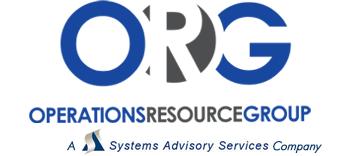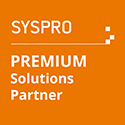(reposted from SYSPRO USA)
Due to increasing pressure from various stakeholders, many companies are turning their focus to ensuring that their supply chains are sustainable. Some people see the concept of a sustainable supply chain as being pushed on them, but there are good business reasons why companies should implement sustainable supply chains — it’s not just social or environmental consciousness.
What is a sustainable supply chain?
A sustainable chain involves implementing sustainable practices at each stage of the supply chain, from raw material sourcing and production to transportation, distribution, and end-of-life disposal. The aim is to minimize the negative impact on the environment and society while maximizing the economic benefits.
The World Economic Foundation [https://www.weforum.org/] have produced reports to show the economic benefits of adopting a sustainable approach, for example:
- Beer packaging, processing, distribution: costs reduced by 20%
- Mobile phones: remanufacturing costs reduced by 50%
Benefits of being sustainable
Sustainable supply chains may be part of a larger ESG (environmental, social, and governance) program. A recent report by the IDC noted some benefits of these programs.
- Companies with successful ESG programs can improve their market position and brand strength
- ESG initiatives can help improve overall financial performance
- Customers are often attracted to companies that apply ESG considerations
- Companies with ESG strategies can more easily adapt to changes in regulatory and legal requirements
As a business driver, companies that have incorporated sustainability initiatives have reduced waste, improved cost-effectiveness and efficiency in operations, created new revenue streams, and enabled product innovation.
Process changes to improve sustainability
What sort of process changes should manufacturers be looking at to improve sustainability?
- Product design – use of appropriate materials; design the product for extended future use.
- Use digital technology – monitor resource and equipment use; use online platforms to connect with supply chain partners.
- Extend what is already made – repair and maintain products to maximize their lifetime; implement a return strategy when applicable.
- Adopt regenerative processes – ensure renewable, reusable materials are used in an efficient way.
- Re-use waste – recover waste for reuse and recycling into other products.
- Collaborate with partners – work together with supply chain partners to identify areas for improvement and to create joint value.
How can your ERP help with a sustainability program
An ERP system has several tools that support sustainability.
Engineering Change Control
Engineering Change Control allows a manufacturer to plan and check the items that constitute a product during the development phase, and how best to incorporate pre-used parts and recycled materials. If a recycled component is found to be defective, a capability like a ‘where-used’ search can be used to identify all of the parts or products that might be affected and quickly mitigate any risk of further problems.
Bill of Materials
Manufacturers looking to incorporate recycled material in their production process, without compromising the final product, should be updating their Bill of Materials (BOM). The BOM ensures there is full control of the quantity, quality, and cost of the materials, and controls the hierarchy of the resources, items and parts that comprise a product. Information from the BOM can help companies trace and report on the percentage of recycled materials that make up the final product sold to customers.
Inventory Management
Excess stock is one waste companies can avoid, but if some stock has an expiry date, it is important to make sure the items are used in time. An inventory management system that logs and tracks these criteria, through accurate stock control and integration with sensors, provides the assurance that there is no excess stock and items are used before expiry.
Supply chain management
By using a web platform that enables online transactions with supply chain partners, manufacturers can improve collaboration with them. For example, ensuring that if a BOM is changed to include recycled material, the change of requirements is seamlessly passed on to suppliers. In the other direction, suppliers can provide input into the design of a BOM to include more sustainable parts and materials.
Managing by-products
Managing by-products opens the opportunity to reuse materials in the production process and reduces waste. Manufacturers can generate new revenue streams by selling by-products into the market or to other organizations that can use them.
Big data management
Manufacturers can now offer services to customers to provide on-site notification of potential problems and pre-emptive maintenance, and therefore extend the usefulness and life of a product. This requires an ERP system that can handle large volumes of data from sensors that monitor the status of components.
Returns management
Enabling returns is crucial for customer retention, and it is important to optimize the way returns are managed. Returns management allows manufacturers to oversee a product’s life cycle from its purchase to its return by a customer for disposal or resale. With returns management in their ERP system, manufacturers can identify if the returned item should be sent back to a supplier, can be refurbished, or should be disposed of.
The drive for sustainable supply chains
The Governance & Accountability Institute has reported that sustainability reporting is being adopted by a huge number of companies. Having a sustainable supply chain is therefore not just a minority view. By creating a sustainable chain, manufacturers can improve their reputation, reduce costs, and increase efficiency, apart from contributing to a better society and environment. Customers and stakeholders are increasingly demanding sustainable products, and a sustainable chain can help meet these demands while also creating long-term value.


